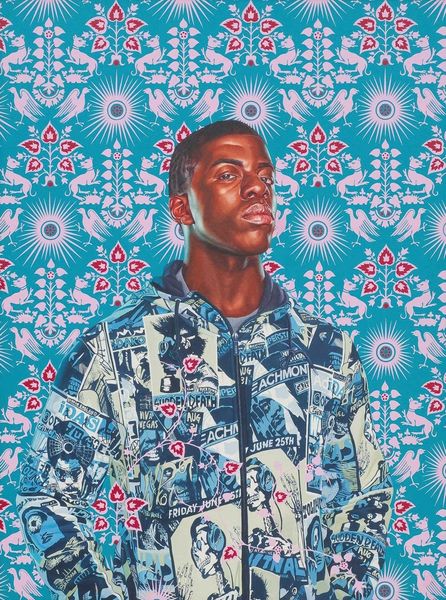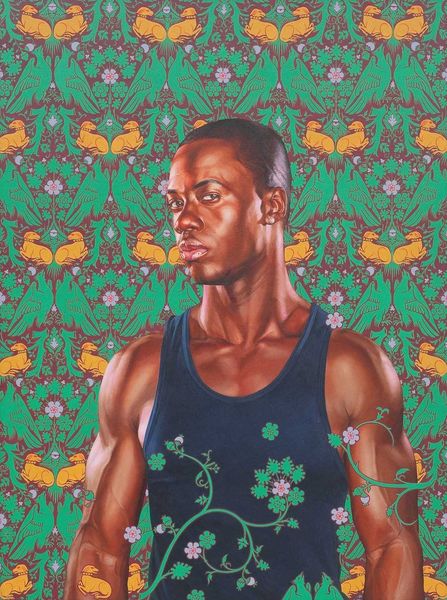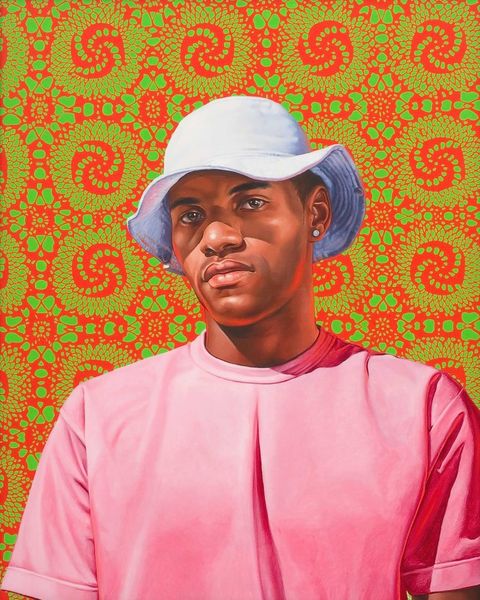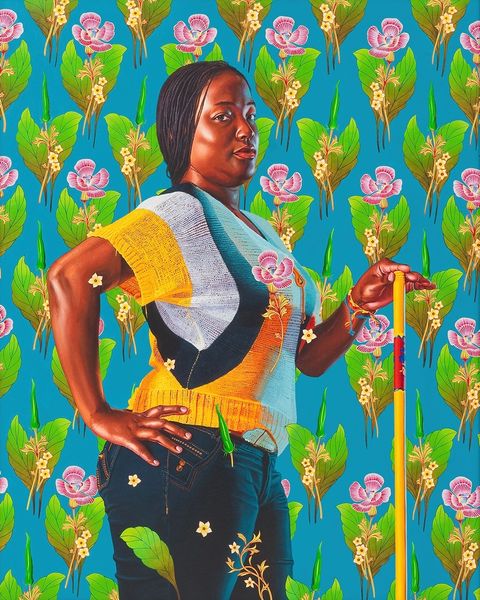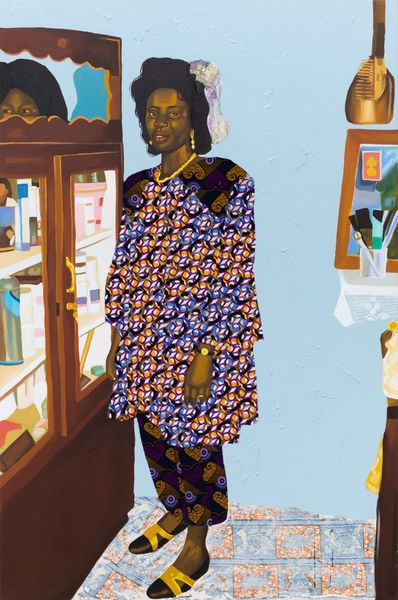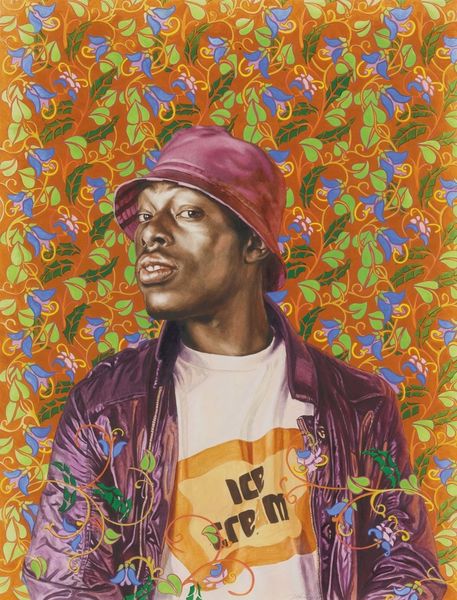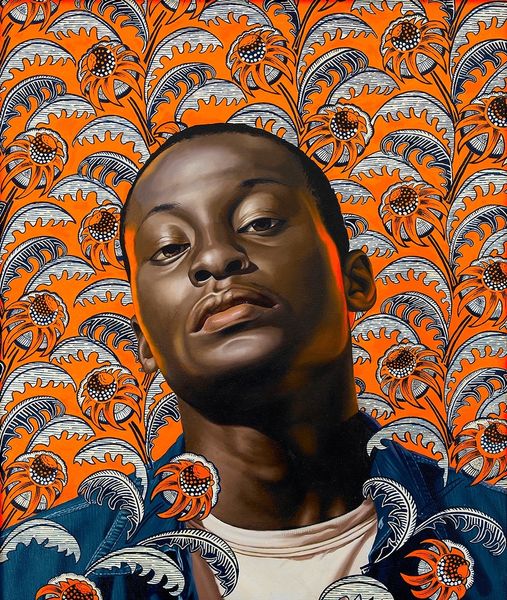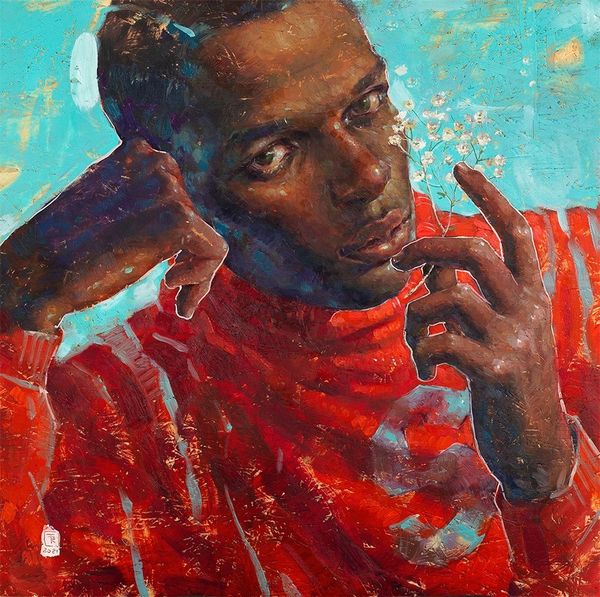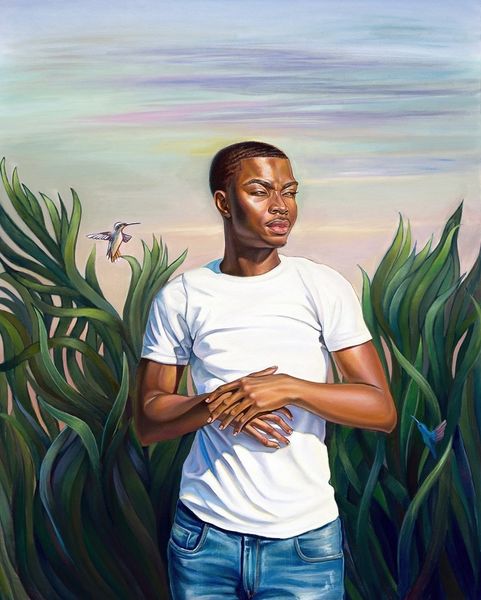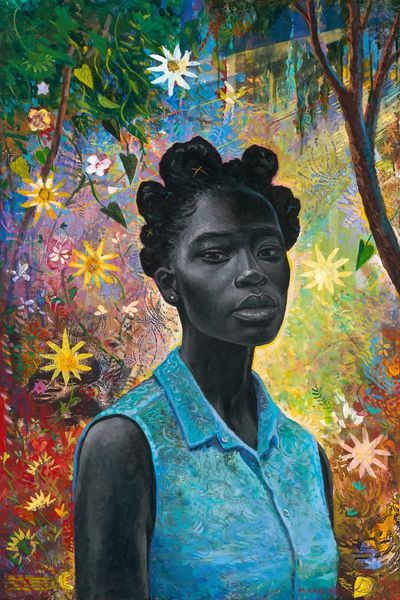
#
pattern-and-decoration
Copyright: Modern Artists: Artvee
Curator: The painting before us is entitled “Clevins Browne,” created in 2013 by Kehinde Wiley. It features acrylic paint on canvas, a hallmark of his style. Editor: My first thought is that the contrast is incredibly striking. The vibrancy of the red backdrop clashes delightfully with the cool blues and greens, setting off the man's darker skin tone and thoughtful gaze. There’s almost a regal quality despite his casual t-shirt. Curator: Wiley often subverts traditional portraiture conventions, particularly those of European masters. In this work, we see a Black man rendered in a style usually reserved for nobility or the elite, challenging historical representation and notions of power. His presence is commanding but approachable. Editor: Absolutely, it disrupts those inherited hierarchies! Considering the legacy of colonialism, the hyper-stylized floral background feels purposefully layered. Are we meant to see this decorative motif as empowering, or is it subtly undermining the sitter through artifice? Does it echo any previous pattern within Kehinde’s work? Curator: Well, Kehinde is known for portraying contemporary Black men and women in heroic poses, often set against ornate floral backgrounds. These patterns are derived from diverse sources, from William Morris wallpapers to textiles from different cultures. The subject chooses the fabric, giving agency, but it certainly fuels a discussion about the gaze, representation, and reclaiming historical narratives. In "Clevins Browne", those blossoms almost burst out from the portrait in a way to create some interesting pattern repetitions that is both, in my opinion, empowering and overwhelming at the same time, for the sitter. Editor: It's such a potent commentary on visibility and agency. We see the individual elevated but also almost camouflaged by this intricate artifice, hinting at how societal structures both spotlight and constrain Black identity. His simple, deep blue shirt, and direct yet vulnerable eye contact draws me back to him, amidst the pattern cacophony. It also opens dialogues on the public role of artwork. Curator: Precisely! And by situating “Clevins Browne” within Wiley’s larger body of work, we recognize his ongoing commitment to disrupting power dynamics and advocating for a more inclusive and representative art world. A critical intervention, that, if anything, triggers our analysis on socio-political imageries. Editor: I'm left contemplating how art can simultaneously celebrate and critique, making visible the complexities of identity in the twenty-first century. A thought-provoking and necessary work of art.
Comments
No comments
Be the first to comment and join the conversation on the ultimate creative platform.
